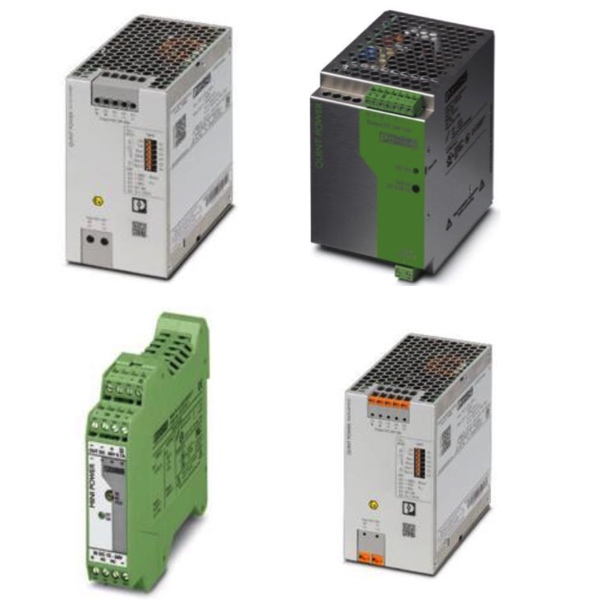Phoenix Contact Converters

Phoenix Contact DC/DC converters provide a regulated DC voltage and avoid disturbances in applications. They regenerate voltages so that the load is always supplied with a regulated DC voltage, even in the case of long cable lengths. They can be used to alter the voltage level or enable the creation of independent supply systems by means of electrical isolation.
Phoenix Contact QUINT DC/DC Converters >100 W are suitable for high power ratings with currents up to 20 A. The wide input voltage range covers all common input and output voltages in the performance classes up to 480 W. The SFB Technology provides preventive function monitoring, IECEx approval and a long service life. Signaling thresholds and characteristic curves for the DC/DC converters can be individually adjusted.
Phoenix Contact QUINT DC/DC Converters <100 W feature high efficiency, preventive function monitoring, and static and dynamic boost. The low housing depth of 89 mm enables installation in flat control cabinets and the DNV-GL approval allows for use in maritime environments.
Phoenix Contact QUINT DC/DC Converters PLUS version with protective coating are designed for extreme ambient conditions. The Plus version with MOSFET integrated decoupling for 1+1 and n+1 redundancy provides symmetrical load distribution and increases system availability. The PCB protective coating protects against dust, corrosive gases and 100% humidity, and with ATEX and IECEx approval, the converters can be used in Zone 2 potentially explosive areas.
Signal Conditioning: Isolators, Converters, Amplifiers & Splitters
Signal isolators are used to protect sensitive equipment, such as PLCs, from potential hazards that may originate from devices they are connected to, such as sensors or transmitters. Isolators can also be used to filter any noise that might arise from disturbances along the signal path back to the PLC.
Signal converters take one type of signal and change it to something else. For example, a signal converter can interpret an RTD signal and convert it into something that a PLC can understand.
Signal amplifiers increase the resolution of an input signal, allowing for more accurate and detailed data to be sent to the controller, enabling better monitoring and control of devices. Another important function that amplifiers perform is increasing the signal-to-noise ratio.
Signal splitters do not change the signal, but allow the signal to be sent to more than one location. For example, a signal splitter can be used to send data to two different PLC’s without any signal degradation.

